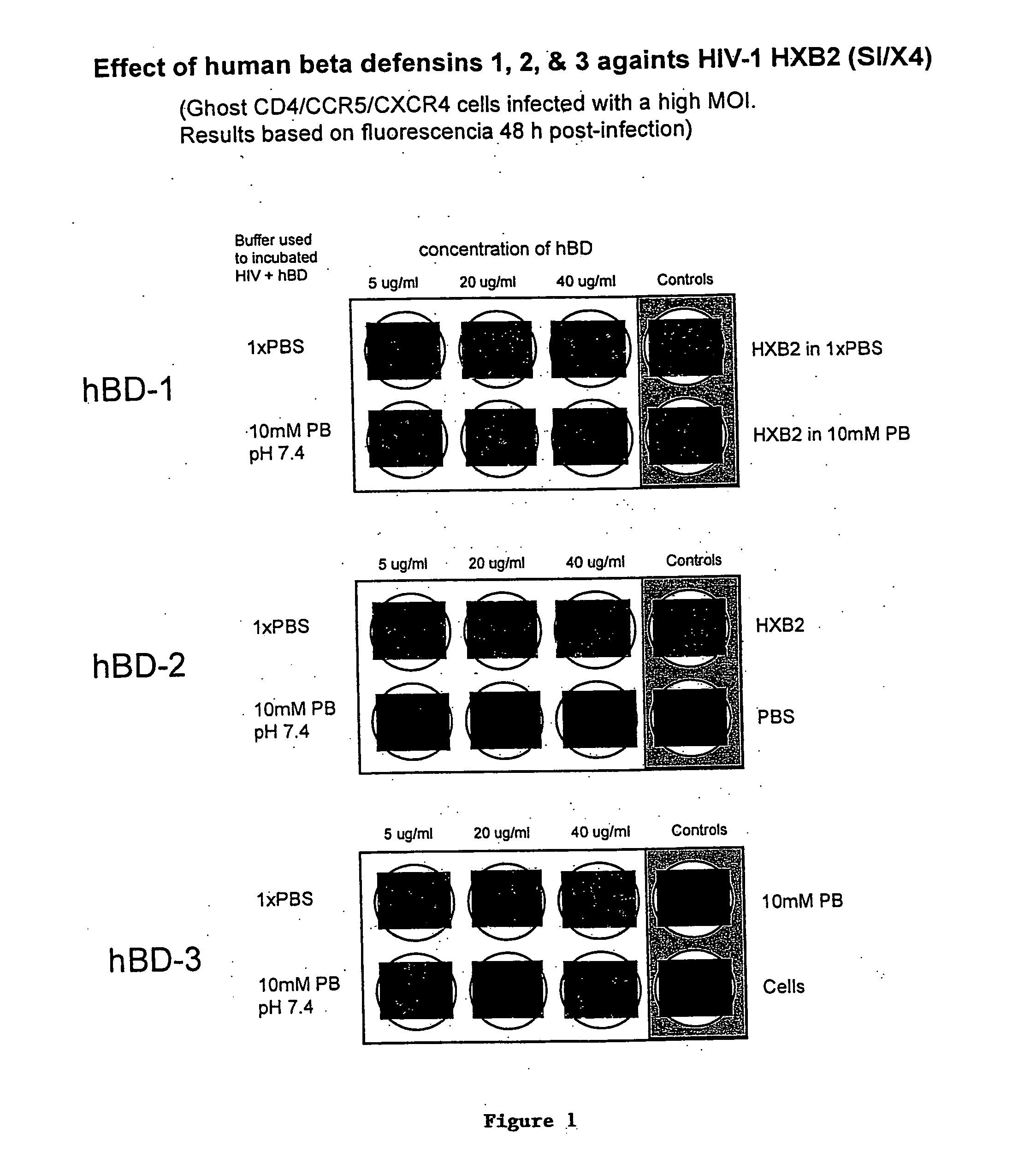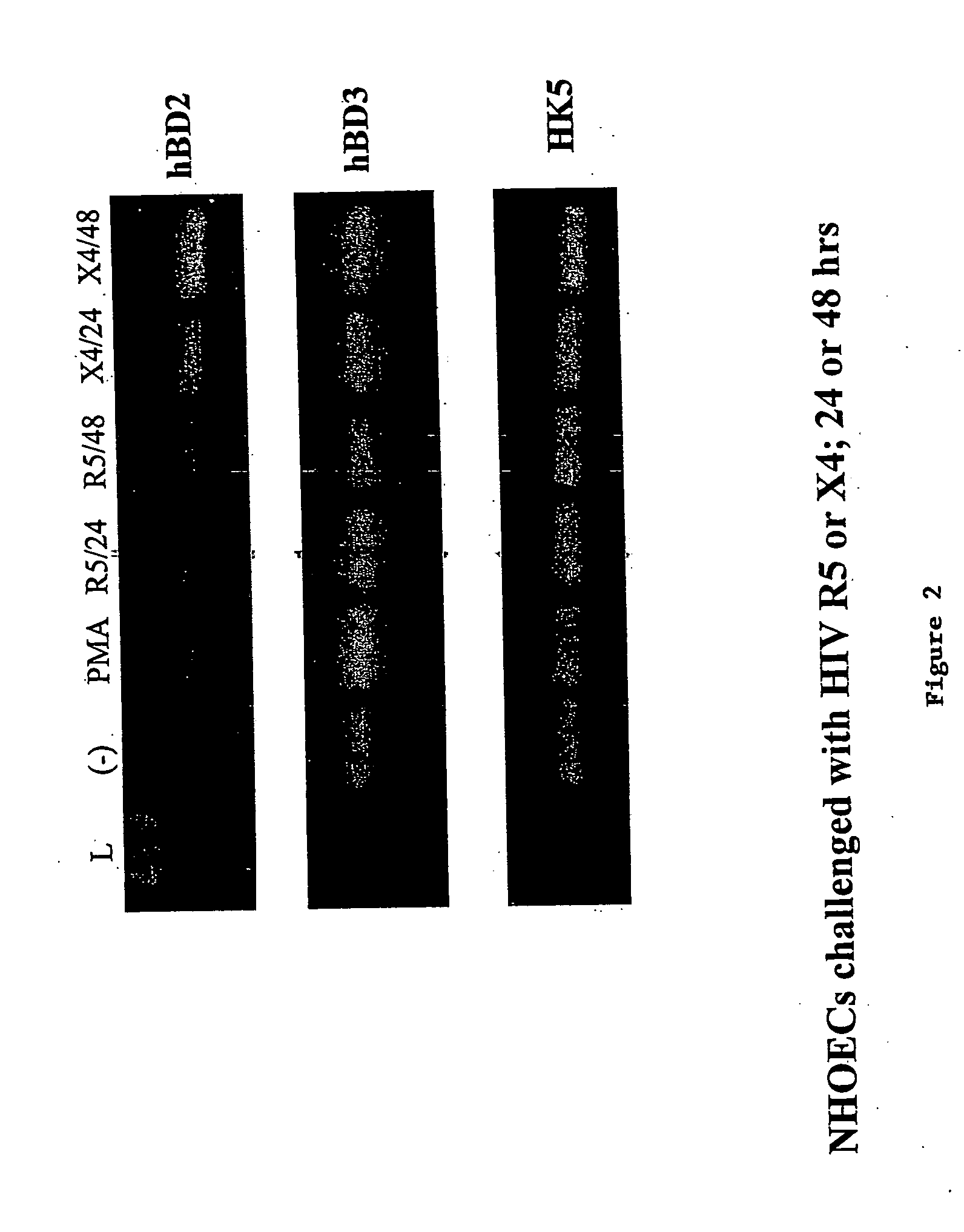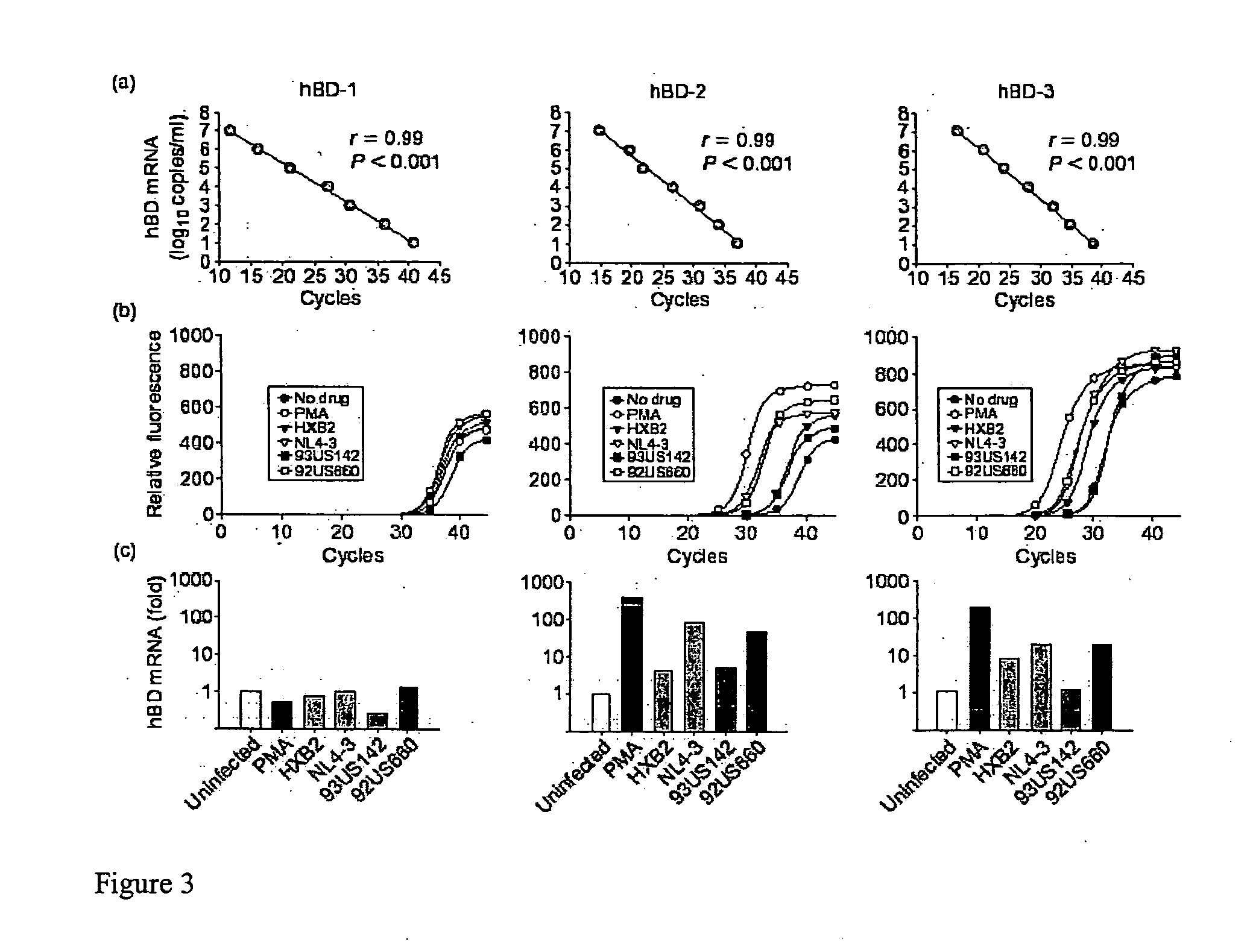Compositions and methods of treating HIV infections
a technology applied in the field of compositions and methods of treating hiv infections, can solve the problems of ineffective antiviral agents taken individually, large number of patients forced to self-administering medications, rapid generation of drug-resistant hiv mutants
- Summary
- Abstract
- Description
- Claims
- Application Information
AI Technical Summary
Benefits of technology
Problems solved by technology
Method used
Image
Examples
example 1
Materials and Methods
[0163] Cells and Viruses
[0164] Peripheral blood mononuclear cells (PBMC) were stimulated with phytohemagglutinin (PHA) and interleukin (IL)-2 [Pauwels et al.]. MT-4 and CEM X4 / R5 T-cell lines, and GHOST CXCR4 and CCR5-transfected osteosarcoma cells cotransfected with the HIV-2 long terminal repeat driving expression of the green fluorescent protein (hGFP), and all viral isolates were obtained through the AIDS Research and Reference Reagent Program. Normal human oral epithelium and cells (NHOEC) were prepared as described [Krisanaprakorkit et al., 1998 and 2000]. Viral stocks were propagated in PHA-stimulated, IL-2 treated PBMC, and tissue culture dose for 50% infectivity was determined [Quinones-Mateu et al.].
[0165] Generation of Recombinant Human β-Defensins (hBDs)
[0166] Recombinant hBD-1 and -2 (rhBD-1 and -2) were produced from the infection of Sf21 cells with baculovirus constructs as described [Valore et al.]. Recombinant hBD-3 (rhBD-3) was produced us...
example 2
HIV-1 Induces hBD-2 and hBD-3 But not hBD-1 mRNA in NHOEC
[0177] NHOEC monolayers were challenged with four different HIV-1 strains representing both viral bio-phenotypes (i.e., SI / X4, B-HXB2 and B-NL4-3; NSI / R5, B-93US142 and B-92US660). Forty-eight hours postinfection, hBD-1, -2, and -3 mRNA expression was measured by real-time PCR. All HIV-1 strains induced hBD-2 and hBD-3 mRNA 4- to 78-fold above baseline (FIG. 3). No induction of hBD-1 mRNA was observed. Supernatants from uninfected MT4 cells or PBMC, used to grow respective viral strains, did not induce either hBD-2 or -3 mRNA expression (data not shown). HBD-2 and -3 transcript expression increased with viral exposure time and was maintained as long as 72 h post-exposure (data not shown). Finally, although HIV-1 can infect epithelial cells from other mucosal surfaces [Yahi. et al.; Fotopoulos et al.], analyses of viral RT activity in culture supernatant [Quinones-Mateu et al.] and real-time PCR to detect proviral DNA in cell...
example 3
HBD-2 and hBD-3 Inhibit HIV-1 Replication
[0178] Since the antibacterial activity of beta-defensins is sensitive to high salt and serum concentrations, the anti-HIV-1 activity of hBD was initially evaluated in a low salt, serum free environment, mimicking oral mucosal conditions [Mandel et al.]. Two HIV-1 isolates (X4 B-HXB2 and R5 B-93US142) were preincubated for 1 h with increasing concentrations of recombinant hBD-1, -2, and -3, in 10 mM phosphate buffer (PB). GHOST CCR5 / CXCR4 cells were then exposed to the mixtures for 48 h in complete medium. While hBD-1 had no effect, preincubation of HIV-1 with either hBD-2 or hBD-3 in 10 mM PB showed anti-HIV-1 activity (FIG. 4b), which was concentration dependent and greater against the X4 B-HXB2 strain than against the R5 B-93US142 isolate (61% versus 15% inhibition with 20 μg / ml hBD-2, respectively) (FIG. 4c). When CXCR4— and CCR5-tropic HIV-1 strains were preincubated with beta-defensins in high salt medium (DMEM) supplemented with 10% ...
PUM
| Property | Measurement | Unit |
|---|---|---|
| molecular weight | aaaaa | aaaaa |
| temperature | aaaaa | aaaaa |
| temperature | aaaaa | aaaaa |
Abstract
Description
Claims
Application Information
 Login to View More
Login to View More - R&D
- Intellectual Property
- Life Sciences
- Materials
- Tech Scout
- Unparalleled Data Quality
- Higher Quality Content
- 60% Fewer Hallucinations
Browse by: Latest US Patents, China's latest patents, Technical Efficacy Thesaurus, Application Domain, Technology Topic, Popular Technical Reports.
© 2025 PatSnap. All rights reserved.Legal|Privacy policy|Modern Slavery Act Transparency Statement|Sitemap|About US| Contact US: help@patsnap.com



